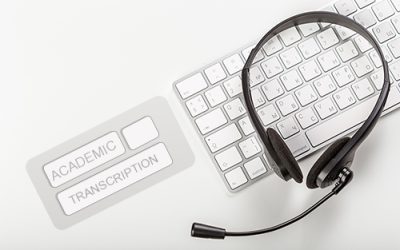Today, the presentation of educational material through video or e-learning is more of a necessity than a choice. Online education has been on the rise over the past decade and the COVID-19 pandemic accelerated its adoption. Video has become an integral part of online school and university education as it enhances interaction between learners and instructors. However, for this tool to succeed, it has to help learners retain information. Including transcripts along with the videos makes this possible. Users can refer to the transcripts instead of having to watch the video multiple times to better comprehend the lesson. In fact, video transcription is one of the many services provided by academic transcription agencies.
The education sector is evolving and has created growth opportunities for the e-learning market. According to a Global Market Insights report, the e-learning market size which exceeded USD 315 billion in 2021 and is expected to expand at a CAGR of 20% 2022 to 2028. This will lead to a significant surge in the use of e-learning tools, especially video. While creating and uploading e-learning videos, educational institutions should include transcripts with them. There are many reasons why e-learning videos need transcripts.
Why e-learning Videos Need Transcripts
- It’s mandatory: Anti-discrimination laws were created to ensure that people with disabilities have access the same resources as the rest of the population. Including transcripts and captions with online videos will make them accessible hard of hearing learners and non-native speakers. Educational institutions that ignore their obligation to make online video content accessible can face litigation. By providing interactive transcripts or captions for all e-learning videos, institutions can demonstrate their commitment to digital inclusion.
- Promotes inclusive education: Inclusive educational practices benefit all students, regardless if they have additional needs or disabilities. Transcription of e-learning videos will improve access to learning materials for those with hearing impairments. It will also benefit students who have cognitive problems and find it difficult to follow auditory information. Further, transcripts and captions can greatly enhance the e-learning experience for students whose native language is not English. With transcripts, they can read along as they watch and listen to the video, which can enhance comprehension, help them learn new words, and improve spelling performance and consciousness. A University of Wisconsin study found that 50% of students used transcripts as study aids (www.depts.ttu.edu/). Transcripts also help students understand lessons by teachers with unfamiliar accents.
- Improves comprehension: Studies have found that video captions improve comprehension of, attention to, and memory for the video. Video transcription adds value and can improve comprehension for students. People tend to remember things better when they both read and hear it. Captions also interpret sound effects such as “raindrops falling” ,”footsteps approach in”, etc. Reports say that e-learning increases retention of information by 25-60%.
- Makes it easy to search for specific information: With a full interactive transcript, users can search for any information they need in the video. Interactive transcripts of videos feature timestamps for each word and highlight words as they are spoken in real-time. By typing a search term into the search bar, you can see every location where the keyword is spoken within the transcript. You can also click on any word in the transcript and jump to that portion in the video. This capability is very useful for e-learners as they don’t have to watch the video again to find pertinent information.
- Helps repurpose video lessons: E-learning video transcripts can be repurposed in different ways. Transcripts can be used to create structured lessons in text format, to develop tests and learning guides, and design training programs. Teachers can prepare questions and responses by cutting and pasting relevant appropriate text from the transcripts, saving a significant amount of time.
- Addresses low bandwidth issues: Transcripts are use for learners who face low bandwidth problems and cannot download large video files. With transcripts, students can read ahead while waiting for the file to download. Short videos along with transcripts are a great option to convey ideas.
- Market online courses more effectively: Educators can leverage academic transcription services to market their courses. Content created from the transcripts of the educational videos can be published on their website and shared on social media platforms.
- Enhances SEO: Media transcription comes with proven SEO benefits. Typically, search engines cannot analyze and comprehend video content. But if videos have transcripts optimized with keywords, the content can be tracked and ranked. By crawling the transcripts and indexing the content, search engines improve traffic and boost the course’s online ranking.
With digital options ranging from mobile devices to online courses and digital textbooks, the e-learning industry is growing at a fast pace. To be effective, eLearning videos have to be well-scripted, well-produced, and meet the desired learning objectives. While meeting learning objectives should be the number one priority, it’s important to craft interesting videos that tell a good story and entertain your learners. Also, remember to keep your educational videos short as this will help learners to absorb the content and process it better. Short e-learning videos are also convenient and easy to access anytime, anywhere. Supporting your video with additional materials such as games, worksheets, and guides can increase engagement and boost the learning experience. Well-crafted e-learning videos and professional transcription services can help educators improve access to their courses and enhance the student experience.




